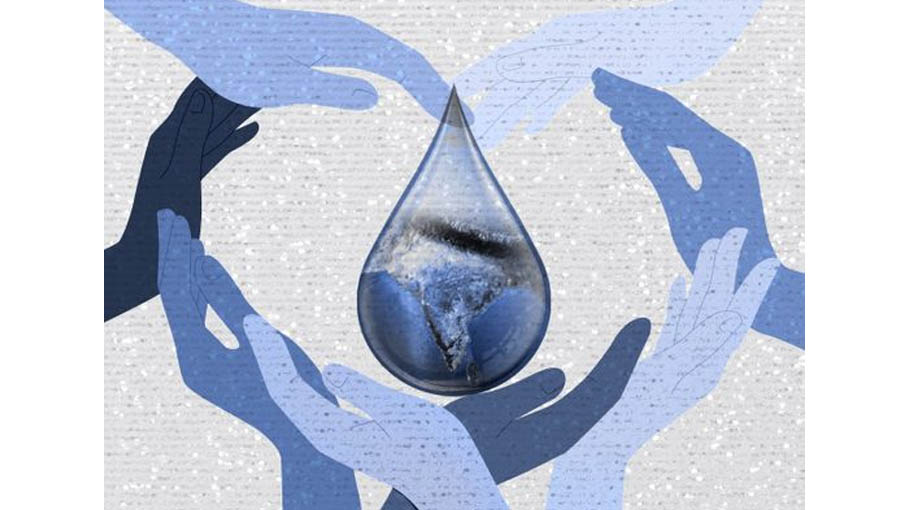High cost of non-cooperation over Ganges-Brahmaputra water
Despite tremendous risk, collaborative water resource management remains a far cry

The Himalayas is the birthplace of some of the world’s important river systems, and the Ganges-Brahmaputra is possibly the most important among these rivers. This massive river system is the largest among all the rivers originating in the Himalayas and the third-largest globally, only overtaken by the Amazon River and the Congo River systems.
The Ganges-Brahmaputra River is the primary source of water supply to five countries — Bangladesh, Bhutan, China (Tibet), India, and Nepal. The water from the river works as a lifeline for the entire basin, supporting the life and livelihood of nearly 700 million people and its diverse biodiversity and vibrant ecosystem.
Despite being rich in water resources, the Ganges-Brahmaputra River basin is one of the world’s poorest regions. With an annual population growth of approximately 1.04 per cent, the region already hosts almost 10 per cent of the global population.
The increasing population, the region’s economic growth, and unsustainable developmental activities multiply water demand alarmingly and the need for more food and energy. To make things worse, the availability of freshwater resources in the basin is rapidly declining due to less rainfall, warmer weather, and depleting groundwater. Water pollution, especially from untreated industrial and domestic waste, is another primary concern.
Climate-vulnerable areas
Climate change has brought added tension and profound uncertainties to the already stressed water situation in the basin. The South Asian region has already been identified as one of the most climate-vulnerable areas globally. The climate pattern and water availability in the Ganges-Brahmaputra basin countries are projected to change substantially due to global warming.
Guaranteeing energy, water, and food security for the ever-increasing
population and safeguarding biodiversity and ecosystem has become
the biggest challenges for the Ganges-Brahmaputra River countries
With increasing temperatures and erratic rainfall, less water is available during the summertime when water demand, especially for irrigation, is high. In the monsoon season, the Ganges-Brahmaputra River system experiences devastating floods more than ever before. The drought and flood combination has also posed a massive challenge to food production in the region.
Most of the countries in the Ganges-Brahmaputra basin, having one of the lowest per capita electricity consumptions globally, are struggling to meet their energy needs and experiencing a shortage of electricity supply.
Many people in the basin still do not have electricity access, and many have to depend on energy sources that are not environmentally sustainable to meet their energy needs. About 400 million Indians do not have a reliable electricity supply. Most rural Nepal has no or minimal access to electricity.
While the Ganges-Brahmaputra basin is facing a crisis over freshwater availability to meet increasing needs for irrigation and hydropower, there is a severe lack of cooperation among the countries in the region. The river flows through five countries, all of which are experiencing bilateral and internal suspicion, mistrust, and political tension.
Competition among most basin countries is centred around unliteral water use, often restricting their ability to develop and manage the water resources cooperatively. The allure to acquire more water has led to political tension and conflicts with other riparian countries in the basin and their affected population in their own countries. This has contributed to the suboptimal development of the Ganges-Brahmaputra River’s water resources.
An incredibly challenging task
I just led a study for Oxfam’s Transboundary Rivers of South Asia (TROSA) to understand and estimate the cost of non-cooperation among countries in the Ganges-Brahmaputra Basin. The study identified various costs resulting from non-cooperation in four different sectors, i.e., water, energy, food, and environment.
It is incredibly challenging and, to some extent, almost impossible to comprehensively quantify and monetise all the types of costs. Drawing upon different reports and published work, the study has made a very conservative estimate of the annual cost of non-cooperation in the basin, approximately $14.2 billion.
Due to a lack of cooperation among basin countries, as the study discovers, the cost is already high in irrigation, flood management, and hydropower sectors, which is expected to increase further if no action is taken. Maintaining the status quo would further deteriorate the water, energy, food, and environmental security of the countries in the basin.
Thus, it is crucial for the countries in the Ganges-Brahmaputra basin to realise the cost of non-cooperation and sincerely assess the massive river’s full potential and the missed opportunities that collaborative arrangements and cooperative actions could accomplish. Lingering in identifying the lost cooperation opportunities would hinder the region’s developmental prospects and social and environmental sustainability.
Unfortunately, despite the high cost and tremendous risk, collaborative water resource management remains a far cry in the Ganges-Brahmaputra Basin. Mutual suspicions and reluctance to cooperate are hampering timely approaches to the regional cooperation to address water-related challenges and the basin’s food, energy, environmental and climate-related issues.
Guaranteeing energy, water, and food security for the ever-increasing population and safeguarding biodiversity and ecosystem has become the biggest challenges for the Ganges-Brahmaputra River countries.
There is no denying that the river’s rich water resources have the potential to expedite the economic growth and social development in the region and elevate the living standards of millions of poor people.
Through collaborative efforts among countries in the basin only, it can be expected that the shared resources of the river system could be optimally and sustainably utilised, and benefits generated from those initiatives could help bring peace and progress to the region.
Ashok Swain is a Professor of Peace and Conflict Research, at Uppsala University, Sweden. Source: Gulf News





